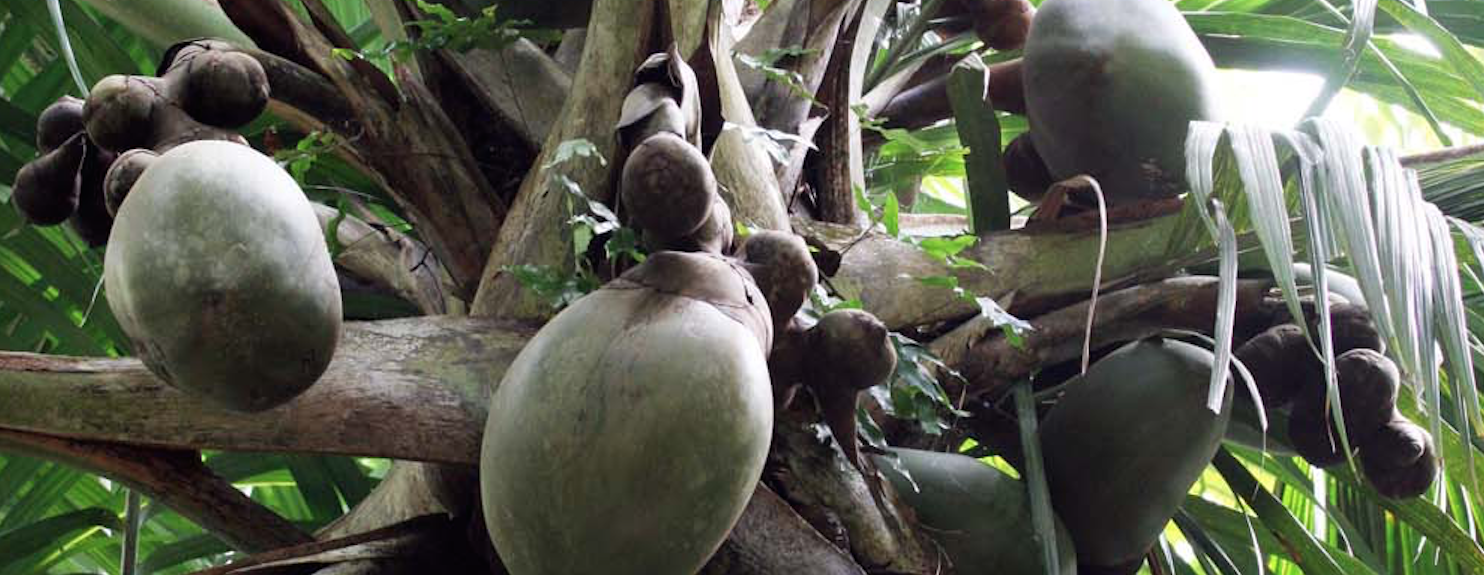New Scientist
Image: Christopher Kaiser-Bunbury
The coco de mer palm of the Seychelles is the stuff of legend. Its seeds – the largest and heaviest in the world – were once believed to grow on trees beneath the waves of the Indian Ocean, and to hold great healing powers. Even when it later turned out that the palm grows on dry land, new folklore emerged: To produce this seed, the male and female plants embrace each other on a stormy night, or so a local story goes.
The legends may be just that, but the palm still has unique appeal. “The coco de mer is the only charismatic plant that can rival the giant panda or the tiger,” says Stephen Blackmore at the Royal Botanic Garden Edinburgh, UK. Now the science behind the charismatic palm’s seeds is proving to be just as fascinating.
So how does a plant that grows in poor quality soil on just two islands produce record-breaking seeds that reach half a metre in diameter and can weigh in at around 25 kilograms?
To find out, Christopher Kaiser-Bunbury at the Technical University of Darmstadt in Germany and his colleagues analysed leaf, trunk, flower and nut samples taken from coco de mer palms (Lodoicea maldivica) living on the island of Praslin.
They found that the leaves have only about one-third of the nitrogen and phosphorus concentrations seen in the leaves of other trees and shrubs growing on the Seychelles. Also, before old leaves are shed, the palm efficiently withdraws most of the nutrients from them and recycles them. Investing so little into the foliage means the palm has more to invest in its fruit. Read more on newscientist.com…








